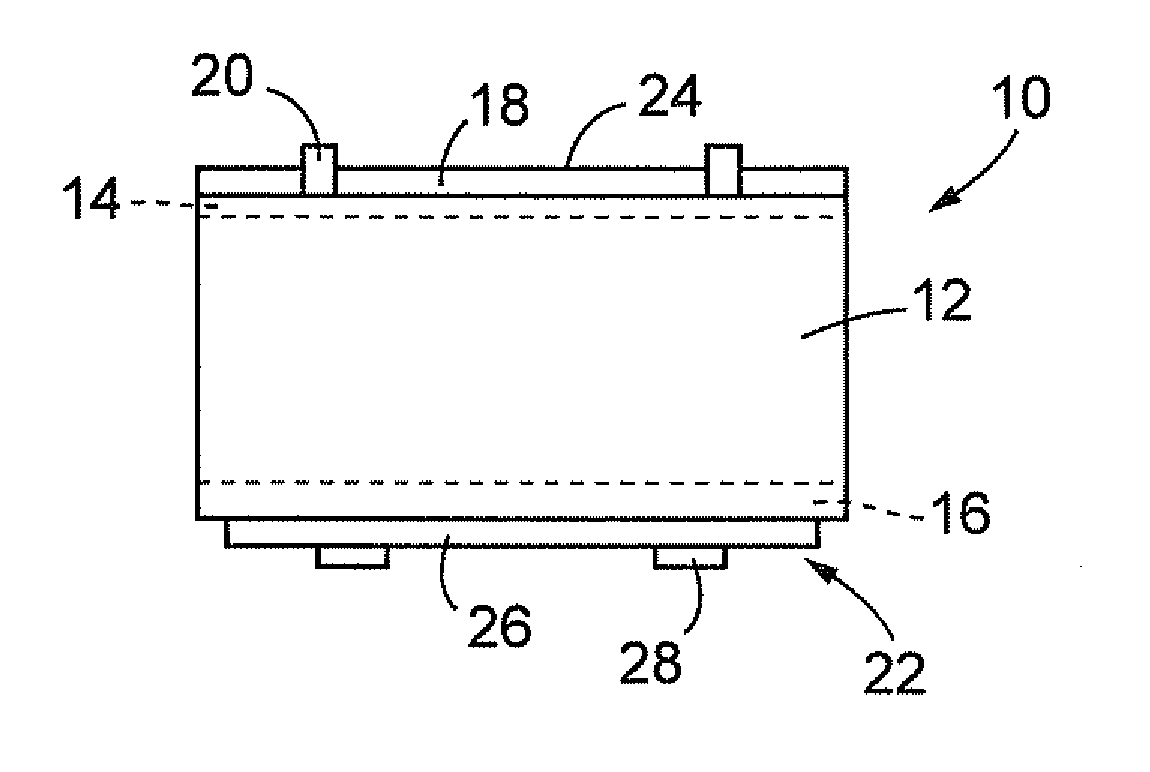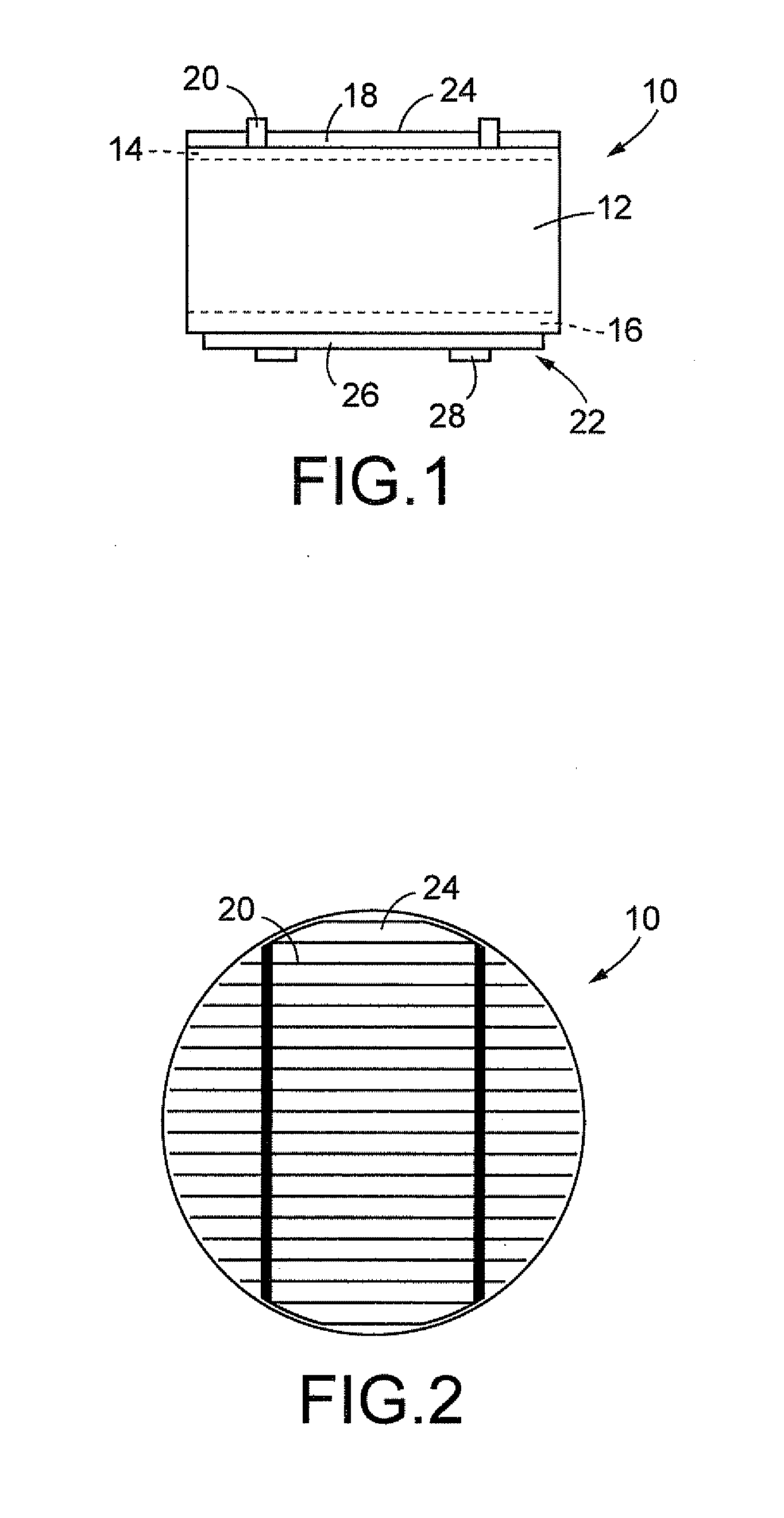Paste composition for solar battery electrode
a solar battery electrode and composition technology, applied in the direction of oxide conductors, non-metal conductors, conductors, etc., can solve the problems of obstructing efficient removal of electric power, and achieve excellent ohmic contact, excellent fire-through properties, and reduced line width
- Summary
- Abstract
- Description
- Claims
- Application Information
AI Technical Summary
Benefits of technology
Problems solved by technology
Method used
Image
Examples
Embodiment Construction
[0037]An embodiment of the present invention will be described below in detail with reference to accompanying drawings. In the following embodiment, the drawings are each properly simplified or deformed and the dimension ratios, shapes, etc., of parts are not necessarily accurately depicted.
[0038]FIG. 1 is a schematic diagram of a cross-sectional structure of a silicon-based solar battery 10 applied with an electrically conductive composition of an embodiment of the present invention. In FIG. 1, the solar battery 10 includes: a silicon substrate 12 that is, for example, a p-type polycrystalline semiconductor; an n-layer 14 and a p+-layer 16 that are respectively formed on the top face and the bottom face of the silicon substrate 12; a reflection preventing film 18 and a light-receiving face electrode 20 that are formed on the n-layer 14; and a back face electrode 22 that is formed on the p′-layer 16. The dimension of the thickness of the silicon substrate 12 is, for example, about 1...
PUM
| Property | Measurement | Unit |
|---|---|---|
| viscosity | aaaaa | aaaaa |
| softening point | aaaaa | aaaaa |
| thickness | aaaaa | aaaaa |
Abstract
Description
Claims
Application Information
 Login to View More
Login to View More - R&D
- Intellectual Property
- Life Sciences
- Materials
- Tech Scout
- Unparalleled Data Quality
- Higher Quality Content
- 60% Fewer Hallucinations
Browse by: Latest US Patents, China's latest patents, Technical Efficacy Thesaurus, Application Domain, Technology Topic, Popular Technical Reports.
© 2025 PatSnap. All rights reserved.Legal|Privacy policy|Modern Slavery Act Transparency Statement|Sitemap|About US| Contact US: help@patsnap.com


